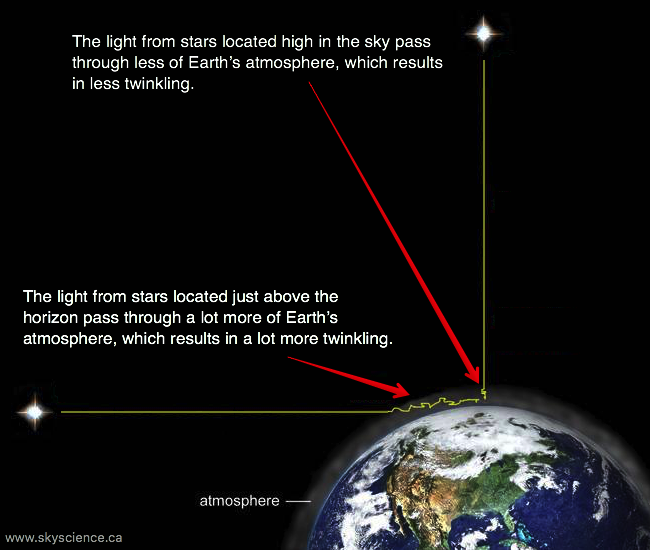|
Emily is a grade 6 student from Calgary and she asked... Why do stars twinkle? What we see as twinkling is really caused by air movements in Earth's atmosphere. Starlight enters the atmosphere as straight rays of light. Twinkling occurs because air movements constantly change the path of the light, making it wiggle, as it comes through the air. Stars that are located high in the sky, near the zenith, twinkle less than stars located near the horizon. The reason for this is because the light from stars located high overhead travels through a much smaller amount of the Earth's atmosphere, compared to stars that are located near the horizon. This can be seen in the image below. As a star rises higher in the sky, due to the Earth's rotation, the star will twinkle less than it did earlier in the evening. If you really want to see a star twinkle, check out Sirius on a winter night, shortly after it rises in the southeastern sky. Sirius is the brightest star seen in the night sky and on a cold crisp winter evening it can twinkle like a diamond in the sky. You will often see flashes of red, green, and blue light as you watch this star rise up into the sky. It really is an amazing sight, so be sure to check it out and show it to your friends and family too. Look for Sirius, also known as the "Dog Star" and Alpha Canis Majoris, rising up in the southeastern sky on the following dates.
0 Comments
Your comment will be posted after it is approved.
Leave a Reply. |
About MeThis blog is written by James Durbano. Currently, I am the Director of the Big Sky Observatory and I'm also the owner and operator of the awesome AstroDome Planetarium. Archives
January 2016
Categories |


 RSS Feed
RSS Feed